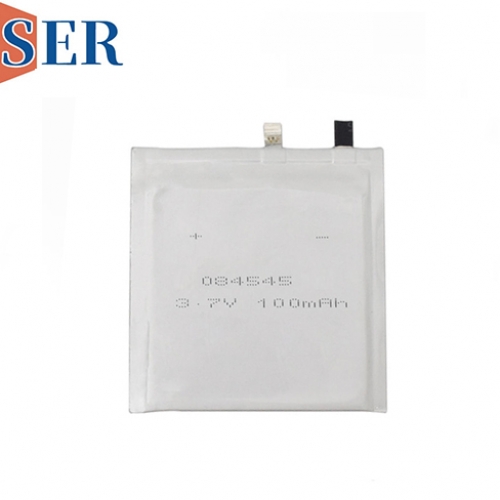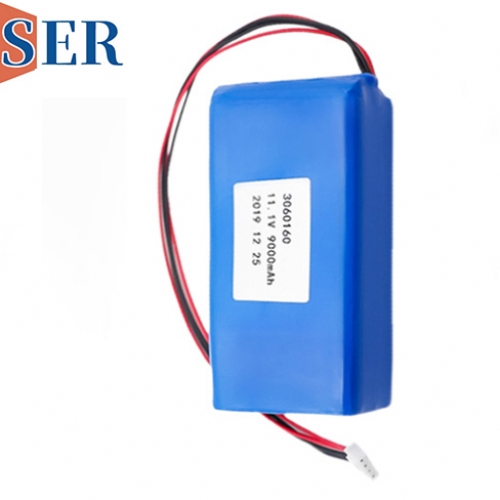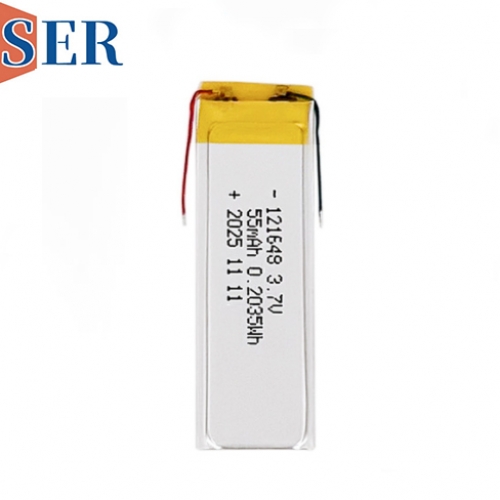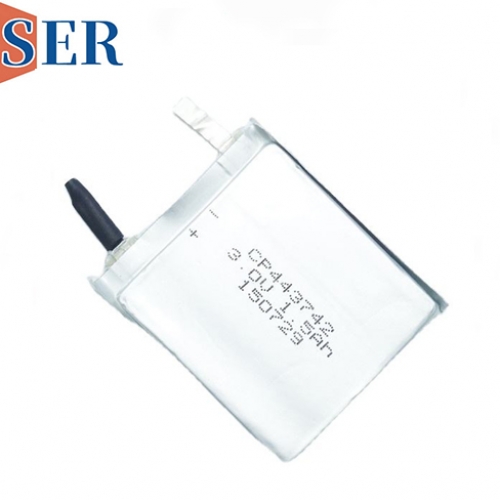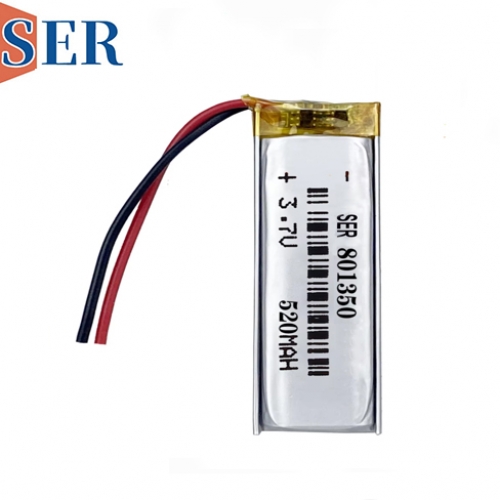Custom Rechargeable Miniature Batteries very small 3.7V Li-ion and Li-polymer battery
Custom Rechargeable Miniature Batteries very small 3.7V Li-ion and Li-polymer battery
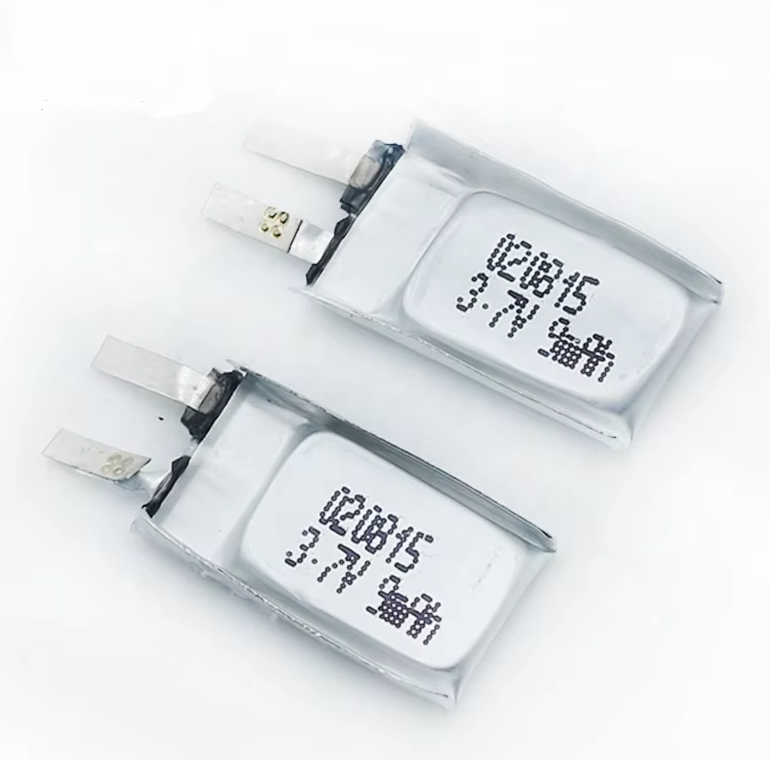
Abstract
In the realm of portable and compact electronic devices, the demand for custom rechargeable batteries that are miniature, slim, and flat has surged. This article delves into the world of 3.7V Li-ion and Li-polymer batteries with capacities ranging from 8mAh to 10mAh, focusing on form factors such as 020815 and 042040. We explore their design, applications, advantages, challenges, and the future outlook for these tiny powerhouses.
Introduction
The electronics industry is continuously evolving, with a strong emphasis on miniaturization and portability. From wearable technology to miniature sensors and IoT devices, the need for compact yet efficient power sources has never been greater. Custom rechargeable batteries that are miniature, slim, and flat have emerged as the go-to solution for these applications. Among them, 3.7V Li-ion and Li-polymer batteries with capacities like 9mAh, 8mAh, and 10mAh are gaining significant traction.
Understanding the Basics: Li-ion vs. Li-polymer Batteries
Lithium-ion (Li-ion) Batteries
Li-ion batteries have been a staple in the electronics industry for decades. They are known for their high energy density, which allows them to store a significant amount of energy in a relatively small and lightweight package. A typical Li-ion battery consists of an anode (usually made of graphite), a cathode (often a lithium metal oxide), and an electrolyte that facilitates the movement of lithium ions between the electrodes during charging and discharging.
Key Features of Li-ion Batteries
High Energy Density: Enables longer device runtime without adding excessive weight or bulk.
Low Self-discharge Rate: Li-ion batteries retain their charge for extended periods when not in use.
No Memory Effect: They can be charged and discharged partially without affecting their overall capacity.
Lithium-polymer (Li-polymer) Batteries
Li-polymer batteries are a variant of Li-ion batteries that utilize a polymer electrolyte instead of a liquid one. This key difference allows for greater flexibility in battery design, enabling the production of ultra-thin, flexible, and custom-shaped batteries.
Key Features of Li-polymer Batteries
Flexible Form Factors: Can be manufactured in various shapes and sizes, including slim and flat designs, making them ideal for compact devices.
Improved Safety: The polymer electrolyte reduces the risk of leakage and thermal runaway compared to traditional Li-ion batteries.
Lightweight: Often lighter than Li-ion batteries with similar capacities, contributing to the overall weight reduction of portable devices.
The Significance of Miniature, Slim, and Flat Designs
Space Constraints in Modern Electronics
As electronic devices become smaller and more integrated, the available space for batteries becomes increasingly limited. Miniature, slim, and flat battery designs allow manufacturers to maximize the use of available space within the device enclosure, ensuring optimal performance without compromising on size or weight.
Form Factors: 020815 and 042040
The 020815 and 042040 form factors refer to specific dimensions of the batteries. For instance, a 020815 battery might measure approximately 2mm in thickness, 8mm in width, and 15mm in length, while a 042040 battery could be 4mm thick, 20mm wide, and 40mm long. These form factors are tailored to meet the space requirements of various electronic devices.
Customization Options
One of the key advantages of custom rechargeable batteries is the ability to tailor them to specific application requirements. Manufacturers can customize the battery's dimensions, capacity, voltage, and even the shape to fit perfectly into the device's enclosure. This level of customization ensures optimal space utilization and performance.
Applications of Custom Miniature Rechargeable Batteries
Wearable Technology
Wearable devices such as smartwatches, fitness trackers, and hearables require compact and lightweight batteries to maintain a sleek and unobtrusive design. Custom miniature Li-ion and Li-polymer batteries are perfect for these applications, providing the necessary power without adding bulk.
Example: Smartwatches
Smartwatches need to be lightweight and comfortable to wear for extended periods. Miniature batteries with capacities like 8mAh or 9mAh can provide sufficient power to run the watch's features, including the display, sensors, and connectivity modules, while still fitting into the slim watch casing.
Medical Devices
In the medical field, miniature batteries are used in a variety of devices, including hearing aids, implantable medical devices, and portable diagnostic equipment. These devices often operate in sensitive environments, requiring reliable and long-lasting power sources.
Example: Hearing Aids
Hearing aids need to be small and discreet while providing clear sound amplification. Custom miniature batteries can fit into the compact hearing aid casing, ensuring all-day power without frequent recharging or battery replacement.
Internet of Things (IoT) Devices
The IoT ecosystem is expanding rapidly, with a vast array of connected devices such as smart sensors, home automation gadgets, and industrial monitoring systems. These devices often operate in remote or hard-to-reach locations, making it essential to have long-lasting, compact batteries that can power them for extended periods.
Example: Smart Sensors
Smart sensors used in environmental monitoring, industrial automation, and smart home applications need to be small and unobtrusive. Miniature batteries with capacities like 10mAh can provide the necessary power to transmit data wirelessly while maintaining a low profile.
Consumer Electronics
From Bluetooth earbuds to miniature cameras and remote controls, consumer electronics are constantly pushing the boundaries of miniaturization. Custom rechargeable batteries play a crucial role in enabling these devices to be smaller, lighter, and more portable.
Example: Bluetooth Earbuds
Bluetooth earbuds need to be lightweight and comfortable to wear for extended listening sessions. Miniature batteries can fit into the small earbud casing, providing sufficient power for several hours of playback while maintaining a sleek and ergonomic design.
Technical Considerations and Performance
Voltage and Capacity
The 3.7V voltage rating is a common specification for many Li-ion and Li-polymer batteries, including the miniature variants discussed in this article. The capacity, measured in milliampere-hours (mAh), determines how much energy the battery can store and, consequently, how long it can power a device before needing to be recharged. Capacities such as 9mAh, 8mAh, and 10mAh are typical for these miniature batteries, although higher capacities can be achieved with larger form factors.
Impact on Device Performance
The choice of battery capacity directly impacts the device's runtime. Higher capacity batteries can provide longer usage times but may also increase the battery's size and weight. Manufacturers need to strike a balance between capacity and form factor to meet the specific requirements of their devices.
Charging and Discharging Characteristics
Understanding the charging and discharging characteristics of these batteries is crucial for optimizing their performance and lifespan. Most Li-ion and Li-polymer batteries require specific charging profiles to ensure safe and efficient charging. Overcharging or over-discharging can significantly reduce the battery's capacity and lifespan.
Charging Management Systems
To ensure safe and efficient charging, many devices incorporate charging management systems that monitor the battery's voltage, current, and temperature. These systems adjust the charging rate and terminate the charging process when the battery reaches its full capacity, preventing overcharging and potential damage.
Cycle Life
The cycle life of a battery refers to the number of charge-discharge cycles it can undergo before its capacity drops below a certain threshold (usually 80% of its original capacity). Miniature Li-ion and Li-polymer batteries typically offer several hundred to a thousand charge cycles, depending on factors such as usage patterns, charging conditions, and temperature.
Factors Affecting Cycle Life
Several factors can affect the cycle life of miniature batteries, including:
Depth of Discharge: Repeatedly discharging the battery to very low levels can reduce its cycle life.
Charging Rate: High charging rates can generate heat, which can accelerate battery degradation.
Temperature: Extreme temperatures, both high and low, can negatively impact battery performance and lifespan.
Safety Considerations and Compliance
Battery Protection Circuits
To ensure the safe operation of miniature rechargeable batteries, especially in sensitive applications, it is essential to incorporate battery protection circuits. These circuits monitor the battery's voltage, current, and temperature, preventing overcharging, over-discharging, and short-circuiting.
Components of Protection Circuits
Protection circuits typically include components such as:
Overcharge Protection: Prevents the battery from being charged beyond its maximum voltage limit.
Over-discharge Protection: Stops the battery from being discharged below its minimum voltage limit.
Short-circuit Protection: Detects and interrupts short circuits to prevent damage to the battery and the device.
Thermal Management
Effective thermal management is crucial for maintaining the performance and safety of miniature batteries. High temperatures can accelerate battery degradation and increase the risk of thermal runaway. Manufacturers often use heat-dissipating materials and design features to manage heat generation during charging and discharging.
Thermal Design Strategies
Strategies for thermal management in miniature batteries include:
Use of Thermally Conductive Materials: Incorporating materials with high thermal conductivity to dissipate heat effectively.
Optimized Battery Layout: Arranging batteries in a way that promotes airflow and heat dissipation.
Temperature Sensors: Integrating temperature sensors to monitor battery temperature and adjust charging or discharging rates as needed.
Regulatory Compliance
Custom rechargeable batteries must comply with various international safety standards and regulations, such as those set by the International Electrotechnical Commission (IEC) and the Underwriters Laboratories (UL). Compliance ensures that the batteries meet strict safety and performance criteria, reducing the risk of accidents and ensuring consumer safety.
Key Safety Standards
Some of the key safety standards for rechargeable batteries include:
IEC 62133: Specifies safety requirements for portable sealed secondary cells and batteries containing alkaline or other non-acid electrolytes.
UL 1642: Covers the safety requirements for lithium batteries.
UN 38.3: Pertains to the transportation of lithium batteries, ensuring they are safe for air, sea, and land transport.
Challenges and Solutions in Miniature Battery Development
Energy Density vs. Form Factor
One of the primary challenges in developing miniature batteries is achieving a balance between energy density and form factor. While higher energy density batteries can provide longer runtime, they may also be larger and heavier, which is not ideal for compact devices.
Innovative Solutions
Researchers and manufacturers are exploring innovative solutions to improve energy density without increasing battery size, such as:
Advanced Electrode Materials: Developing new electrode materials with higher energy storage capabilities.
Nanostructuring: Using nanotechnology to enhance the surface area and reactivity of electrode materials, improving battery performance.
Solid-state Batteries: Investigating solid-state battery technology, which has the potential to offer higher energy densities and improved safety compared to traditional Li-ion and Li-polymer batteries.
Cost and Scalability
Another challenge is the cost and scalability of producing miniature batteries. Customization often comes at a higher cost, and scaling up production to meet demand can be challenging.
Cost-effective Manufacturing Strategies
To address these challenges, manufacturers are adopting cost-effective manufacturing strategies, such as:
Automation: Implementing automated production processes to reduce labor costs and improve efficiency.
Standardization: Developing standardized battery designs and components to reduce customization costs.
Economies of Scale: Increasing production volumes to achieve economies of scale and reduce per-unit costs.
Future Outlook and Innovations
Advancements in Battery Technology
Ongoing research and development in battery technology are focused on improving energy density, reducing charging times, and enhancing safety. Innovations such as solid-state batteries, which use a solid electrolyte instead of a liquid one, hold promise for even higher energy densities and improved safety compared to traditional Li-ion and Li-polymer batteries.
Potential Impact on Miniature Batteries
If solid-state battery technology becomes commercially viable, it could revolutionize the miniature battery market by enabling the production of even smaller, lighter, and more powerful batteries. This, in turn, could drive the development of new and innovative electronic devices.
Sustainability and Recycling
As the demand for rechargeable batteries continues to grow, so does the need for sustainable practices in their production and disposal. Manufacturers are increasingly focusing on using environmentally friendly materials and developing efficient recycling processes to minimize the environmental impact of battery production and waste.
Green Battery Initiatives
Some of the initiatives aimed at promoting sustainability in the battery industry include:
Use of Recycled Materials: Incorporating recycled materials into battery production to reduce the reliance on virgin resources.
Energy-efficient Manufacturing: Implementing energy-efficient manufacturing processes to reduce greenhouse gas emissions.
Battery Recycling Programs: Establishing battery recycling programs to recover valuable materials and prevent batteries from ending up in landfills.
Integration with Renewable Energy Sources
The integration of miniature rechargeable batteries with renewable energy sources, such as solar and wind, is another emerging trend. This integration enables the storage of energy generated from renewable sources, making it available for use when needed and contributing to a more sustainable energy future.
Applications in Remote and Off-grid Locations
Miniature batteries can play a crucial role in powering devices in remote or off-grid locations where access to the electrical grid is limited. For example, they can be used in solar-powered sensors for environmental monitoring or in portable medical devices for use in disaster-stricken areas.
Conclusion
Custom rechargeable miniature batteries are essential components in the modern electronics landscape. Their compact design, high energy density, and customization options make them ideal for a wide range of applications, from wearable technology and medical devices to IoT gadgets and consumer electronics. As technology continues to advance, we can expect further innovations in battery design, performance, and safety.
However, the development of miniature batteries also presents challenges, such as achieving a balance between energy density and form factor, managing costs, and ensuring scalability. Manufacturers are addressing these challenges through innovative solutions, cost-effective manufacturing strategies, and a focus on sustainability.
Looking to the future, the integration of miniature batteries with renewable energy sources and the potential for solid-state battery technology hold promise for even greater advancements in the field. As we continue to push the boundaries of miniaturization and portability, custom rechargeable miniature batteries will remain at the forefront of innovation, driving the development of smaller, more efficient, and more sustainable electronic devices.

